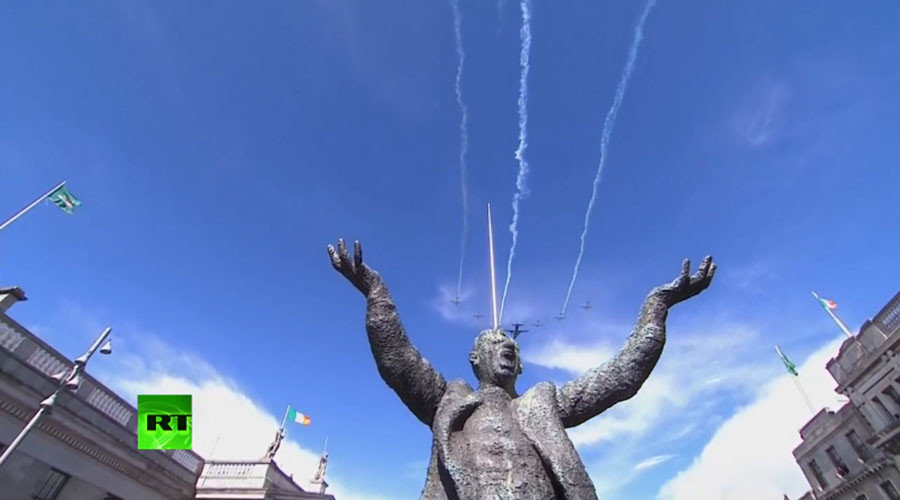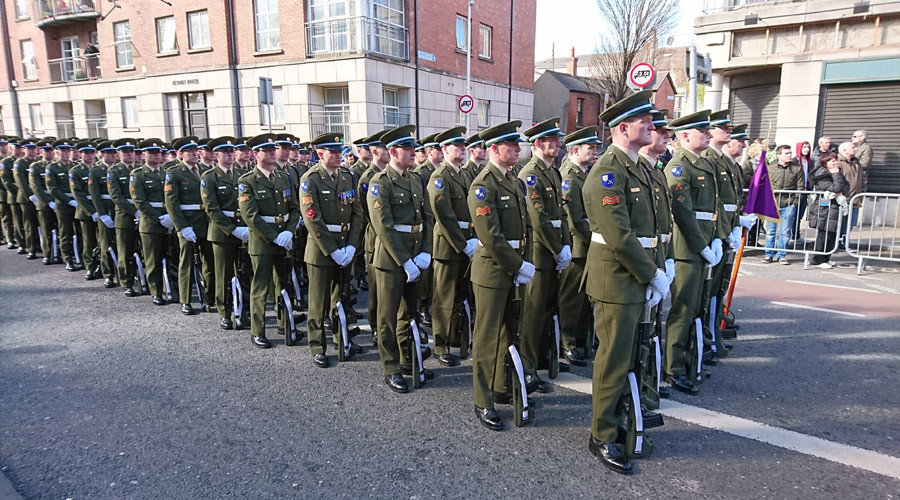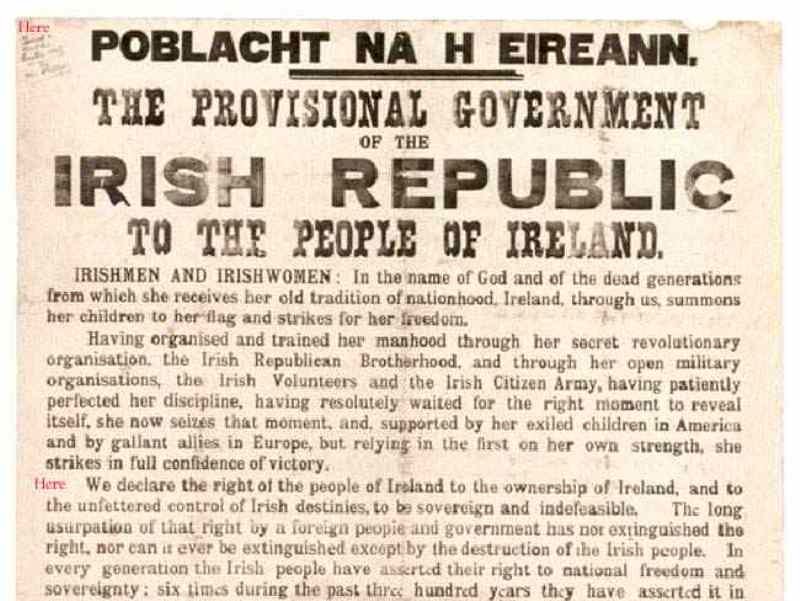Most of the city center in the capital Dublin was shut down while tens of thousands gathered to watch the military parade from the urban park St Stephen's Green to the General Post Office (GPO) building where Easter Rising rebels battled the British military.
Although the rebellion took place in 1916, it would be years before the Irish would successfully overthrow the foreign empire that occupied Irish soil, and could evolve into the (almost) independent republic we know today.
Six of the island's 32 counties are still under the Queen's thumb, unable to be wrested from her despite decades of struggle over the past 40 years.
Sinn Féin leader Gerry Adams spoke with RT on a windy Good Friday during another ceremony nearby.
He was hoping to be the Taoiseach (Prime Minister) this weekend, but fell short in the recent election.
Sunday's Dublin ceremonies were the principal state-funded commemorations during this long weekend of events.
Just after noon, the 1916 Proclamation was read in the same spot as 100 years ago, this time in front of descendants of the rebels who fought to overthrow British rule in Ireland.
The parade featured one of the largest military displays in the history of the state including more than 3,200 marchers and a colorful "fly-past" by the Air Corps, which only has 26 craft in its fleet including a Learjet, 5 Cessnas, and 4 Eurocopters.
While most commemorations happen on the exact date of the events, this year's celebrations were set around Easter weekend, even though they actually happened April 24-29, 1916.
More unusual is that this celebration of Irish independence and the new republic comes at a time when the country is without a formed government.
The February general election spread votes across several parties and the ruling coalition was unable to form a new government, leaving a caretaker prime minister to participate in the events.
As Harry Browne noted in RT's live Periscope of the parade, the commemoration of the rebellion is not without irony, as "the whiff of rebellion in the air of 1916 continues."
We've got a massive crisis of homeless in Ireland, exacerbated because so many properties that were caught up in the crash of the Irish property market in the last few years have been bought up by international vulture funds who are, in many cases, evicting large numbers of tenants from those housing.
Foreign landlords, the bane of Irish life down through centuries, and indeed Irish ones, remain significant problem in Irish life. Thousands of people are waiting to be housed by public authorities which haven't been building housing over recent years and thousands more being made homeless every year because of the irrational working of a property market that exists solely for profit.
Even when parts of those properties have passed through the hands of state bodies such as the National Assets Management Agency, no effort is made to ensure they end up serving a useful social purpose. Instead, rents continue to rise and people continue to be turned out onto the street today, as the capital celebrates an alleged 100 years of the struggle for independence and freedom for Irish people.
'Culture of cronyism': Corrupt £1.3bn NAMA property deal sparks calls for investigation https://t.co/woBsyqEQHy— Stephen Kavanagh (@kavvy_1) March 3, 2016
The first was laid at the Sigerson Monument for all who served during Easter Week; the second at the grave of Edward Hollywood, who was the weaver of the first Irish Tricolor in 1848; and the third at the grave of Peadar Kearney, who wrote the lyrics to "The Soldiers' Song" / "Amhrán na bhFiann".
President Higgins laid a wreath at the yard in Kilmainham Jail, where 14 of the rebels were executed by firing squad.






If Ireland has only a provisional government, I'm thinking that the individuals are really thinking this out. They have an amazing opportunity to become the first country to actually "ascend" to this new golden age! All 'old' ideas left behind, the new, the one the people agree on, how they want it, to make their world the way THEY want it! Very interesting and exciting considering the nature of these times. All it takes is ONE community, as Michael Tellinger says, to change the whole world!! UBUNTU!!!!!